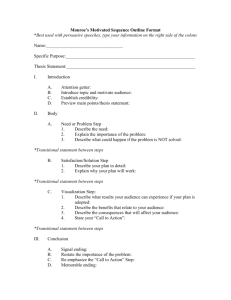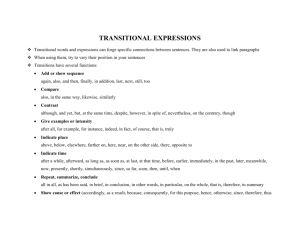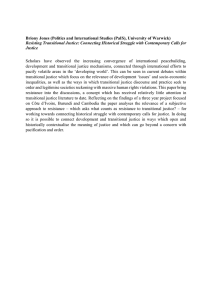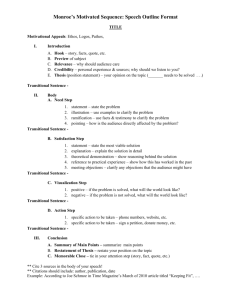Reducing Poverty and Economic Distress after ARRA
advertisement
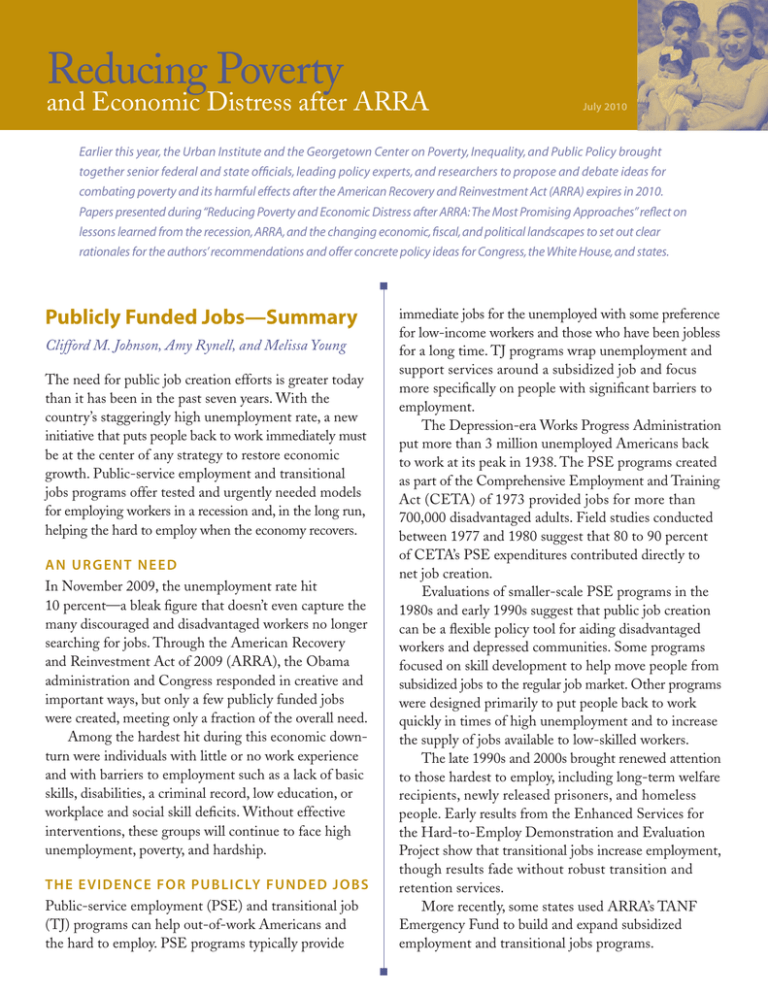
Reducing Poverty and Economic Distress after ARRA July 2010 Earlier this year, the Urban Institute and the Georgetown Center on Poverty, Inequality, and Public Policy brought together senior federal and state officials, leading policy experts, and researchers to propose and debate ideas for combating poverty and its harmful effects after the American Recovery and Reinvestment Act (ARRA) expires in 2010. Papers presented during “Reducing Poverty and Economic Distress after ARRA:The Most Promising Approaches” reflect on lessons learned from the recession,ARRA,and the changing economic,fiscal,and political landscapes to set out clear rationales for the authors’recommendations and offer concrete policy ideas for Congress,the White House,and states. Publicly Funded Jobs—Summary Clifford M. Johnson, Amy Rynell, and Melissa Young The need for public job creation efforts is greater today than it has been in the past seven years. With the country’s staggeringly high unemployment rate, a new initiative that puts people back to work immediately must be at the center of any strategy to restore economic growth. Public-service employment and transitional jobs programs offer tested and urgently needed models for employing workers in a recession and, in the long run, helping the hard to employ when the economy recovers. AN URGENT NEED In November 2009, the unemployment rate hit 10 percent—a bleak figure that doesn’t even capture the many discouraged and disadvantaged workers no longer searching for jobs. Through the American Recovery and Reinvestment Act of 2009 (ARRA), the Obama administration and Congress responded in creative and important ways, but only a few publicly funded jobs were created, meeting only a fraction of the overall need. Among the hardest hit during this economic downturn were individuals with little or no work experience and with barriers to employment such as a lack of basic skills, disabilities, a criminal record, low education, or workplace and social skill deficits. Without effective interventions, these groups will continue to face high unemployment, poverty, and hardship. THE E VIDENCE FOR PUBLICLY FUNDED JOBS Public-service employment (PSE) and transitional job (TJ) programs can help out-of-work Americans and the hard to employ. PSE programs typically provide immediate jobs for the unemployed with some preference for low-income workers and those who have been jobless for a long time. TJ programs wrap unemployment and support services around a subsidized job and focus more specifically on people with significant barriers to employment. The Depression-era Works Progress Administration put more than 3 million unemployed Americans back to work at its peak in 1938. The PSE programs created as part of the Comprehensive Employment and Training Act (CETA) of 1973 provided jobs for more than 700,000 disadvantaged adults. Field studies conducted between 1977 and 1980 suggest that 80 to 90 percent of CETA’s PSE expenditures contributed directly to net job creation. Evaluations of smaller-scale PSE programs in the 1980s and early 1990s suggest that public job creation can be a flexible policy tool for aiding disadvantaged workers and depressed communities. Some programs focused on skill development to help move people from subsidized jobs to the regular job market. Other programs were designed primarily to put people back to work quickly in times of high unemployment and to increase the supply of jobs available to low-skilled workers. The late 1990s and 2000s brought renewed attention to those hardest to employ, including long-term welfare recipients, newly released prisoners, and homeless people. Early results from the Enhanced Services for the Hard-to-Employ Demonstration and Evaluation Project show that transitional jobs increase employment, though results fade without robust transition and retention services. More recently, some states used ARRA’s TANF Emergency Fund to build and expand subsidized employment and transitional jobs programs. The Urban Institute | www.urban.org | 202.833.7200 Copyright © The Urban Institute. ARRA TANF EMERGENCY FUNDS USED FOR TRANSITIONAL JOBS • Los Angeles County is using its share of TANF Emergency Funds to expand TJ opportunities, aiming to place 10,000 participants in subsidized employment by March 2010. San Francisco County is also using TANF Emergency Funds to expand its JOBS NOW! program to provide TJ slots to an additional 1,000 unemployed and underemployed parents by September 2010. • At least 10 other counties in California are developing or expanding TJ program models as a result of ARRA TANF Emergency Funds. In total, California estimates it will use more than $300 million in TANF Emergency Funds for TJ programs. • New York State is planning a $39 million effort to provide transitional job programs to the unemployed.The state will spend $25 million to create a new Transitional Jobs Initiative that will provide paid, subsidized work experience—combined with educational opportunities related to work—to TANF-eligible individuals, including ex-offenders and disconnected youth. Remaining funds will be used to create TJ programs leading to the green jobs and health care sectors. K E Y E L E M E N TS O F A F E D E R A L J O B C R E AT I O N I N I T I AT I V E Past experience shows that public service employment and transitional jobs can work, though they are challenging to design and put into practice. State and local efforts need sustained federal commitment and funding to keep job creation programs in place through good economic times and bad. A multiphase job creation endeavor could begin in 2010 with “fast-track” efforts to federally fund PSE projects launched by local governments. Provisions could be put in place to prevent substitution and displacement of current employees. In the longer-term second phase, local officials could develop a broader array of work projects and build stronger links between PSE jobs and education or training. As the economy recovers and employment improves, federal investments should shift from PSE placements to transitional jobs with a greater focus on the hard to employ. An ongoing investment in transitional jobs would enable states and localities to preserve a public job creation infrastructure and provide a foundation to start up PSE programs if and when employment rates fall again. The reauthorization of the Temporary Assistance for Needy Families and the Workforce Investment Act programs offer funding opportunities to support transitional jobs. Also, the newly introduced Criminal Justice Reinvestment Act of 2009 could support TJ programs for newly released prisoners. The need for publicly funded jobs is—and will continue to be—great. With strong federal action now, the Obama administration and Congress can combat the current economic crisis and lay the groundwork for a permanent program ready to respond to future economic downturns. To read the full paper and other materials from this series, go to http://www.urban.org/issues/reducing-poverty-economic-distress.cfm. Dissemination of this publication was funded by the Urban Institute’s Low-Income Working Families project.

